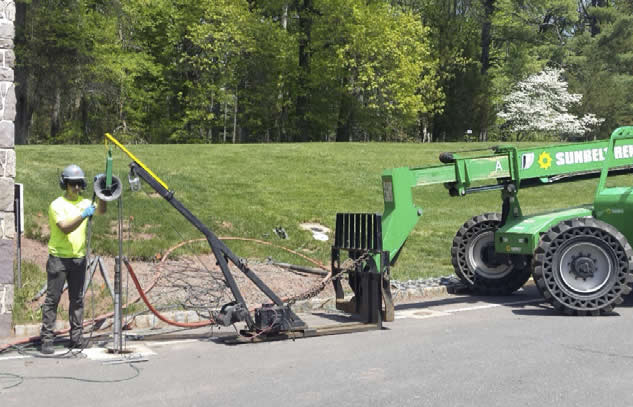ABSTRACT
Trap & Treat® BOS 100® was injected in fractured shale bedrock at a corporate site in New Jersey in 2018. The Classification Exception Area /Well Restriction Area (CEA/WRA) was removed 25 months post-injection after achieving New Jersey Ground Water Quality Standards (GWQS).


BOS 100® ACHIEVES GWQS IN FRACTURED BEDROCK AT A TCE RELEASE SITE IN NEW JERSEY
PROJECT SNAPSHOT
Key Dates
• 1992 – Unknown TCE discharge discovered in groundwater testing
• 2011 – Former catch basin and soils removed
• 2016 – Remedial Investigation Report (RIR)
• 2018 – BOS 100 injections
• 2020 – CEA/WRA lifted
Treatment Area (Figure 1): = 3,500 ft2
Lithology: Reddish-brown argillaceous shale, localized sandstone/siltstone interbedding
Depth to Water: 10 ft below ground surface (ft-bgs)
Treatment Interval: 15 to 60 ft-bgs
Contaminants: TCE and 1,1-DCE
Transition Zone Implementation Method: DPT Injection
Bedrock Zone Implementation Method: Straddle Packer/AST Custom Bedrock Injection Unit
APPROACH
• Trap and Treat BOS 100 slurry was applied within the fracture network of three wells and ten pre-drilled points within the transition zone.
• Fracture Network Injections were conducted using the AST bedrock truck unit which provides high flow rates through a narrow (18 inch) straddle packer system.
• Transition Zone Injections were also conducted using the AST bedrock truck unit, injections were completed using high flow rates through 2.25” direct-push rods with a custom port injection tip.
• Injection flow rates of 70 to 100 gallons per minute were used over the course of the project.
CHALLENGES & OBJECTIVES
• The site was in a grassy area abutted by woods at a corporate campus. Three other AOCs were previously managed and closed onsite, using excavation and removal to manage overburden soils. Chlorinated solvent impacts were not above limits for overburden soils, so AST’s effort focused on treating groundwater in bedrock.
• Transition zone injections were completed by installing Pre-Drill access points (bentonite columns) for DPT injection using high-pressure and high flow Wanner pumps.
• Wells were installed with air rotary/HSA and the vertical interval of interest was left uncased so borehole geophysical tooling, discrete interval (18 inch) sampling via straddle packer, and straddle-packer injection could be conducted.
• The custom AST bedrock injection unit was mobilized to the site to provide effective distribution of BOS 100 in secondary and primary porosities in the bedrock.
• The project objective for TCE and 1,1-DCE in groundwater was 1 ug/l.
RESULTS
• The maximum baseline concentrations for the target contaminants in MW-2 was 73.1 ug/l for TCE and 3.3 ug/L for 1,1-DCE, prior to transition and bedrock zone injections.
• All four (4) monitoring wells within the treatment footprint achieved the project objective of 1 ug/l for TCE and 1,1-DCE in less than 6 months of the injection event. After five rounds of quarterly sampling, the Licensed Site Remediation Professional (LSRP) applied for removal of the CEA/WRA.







